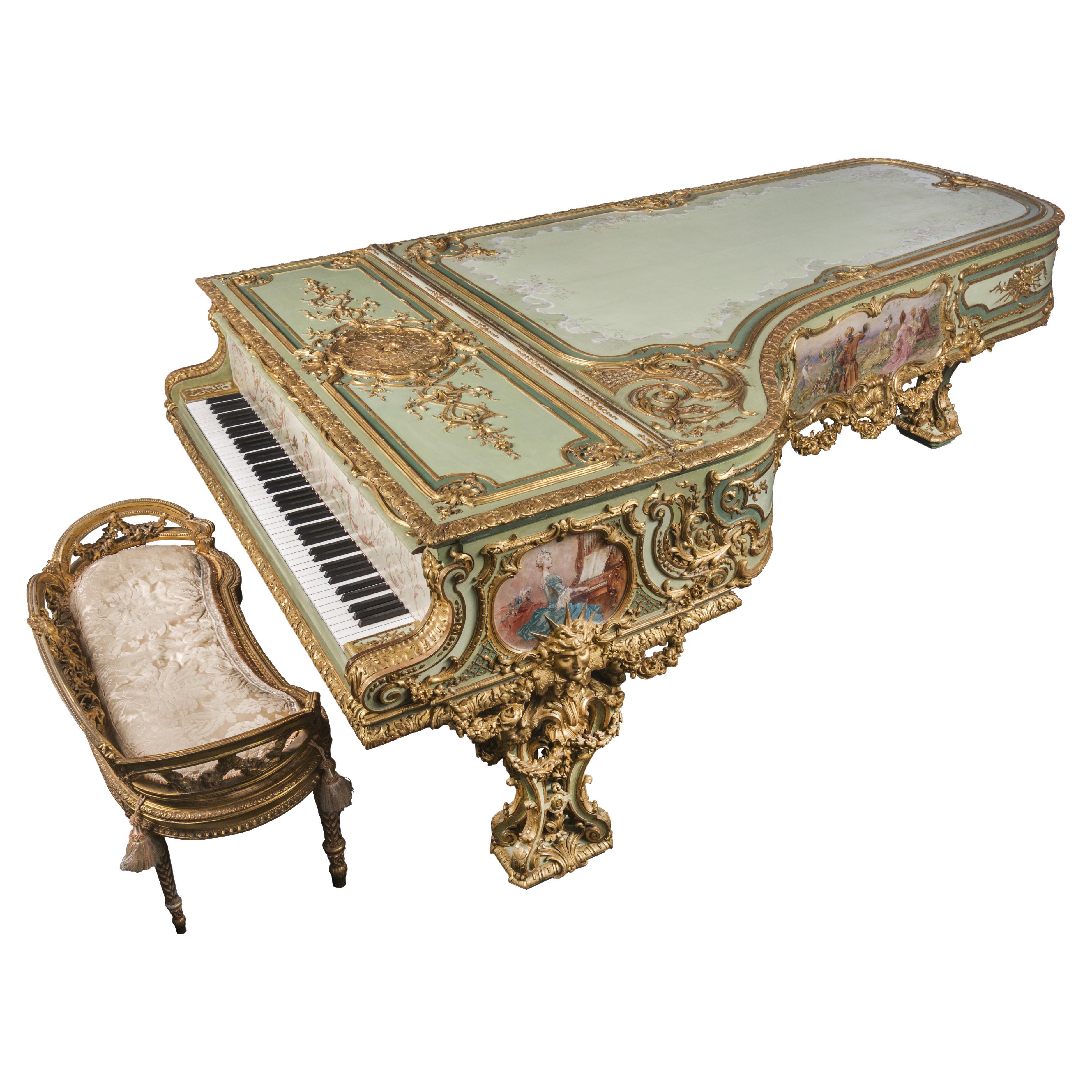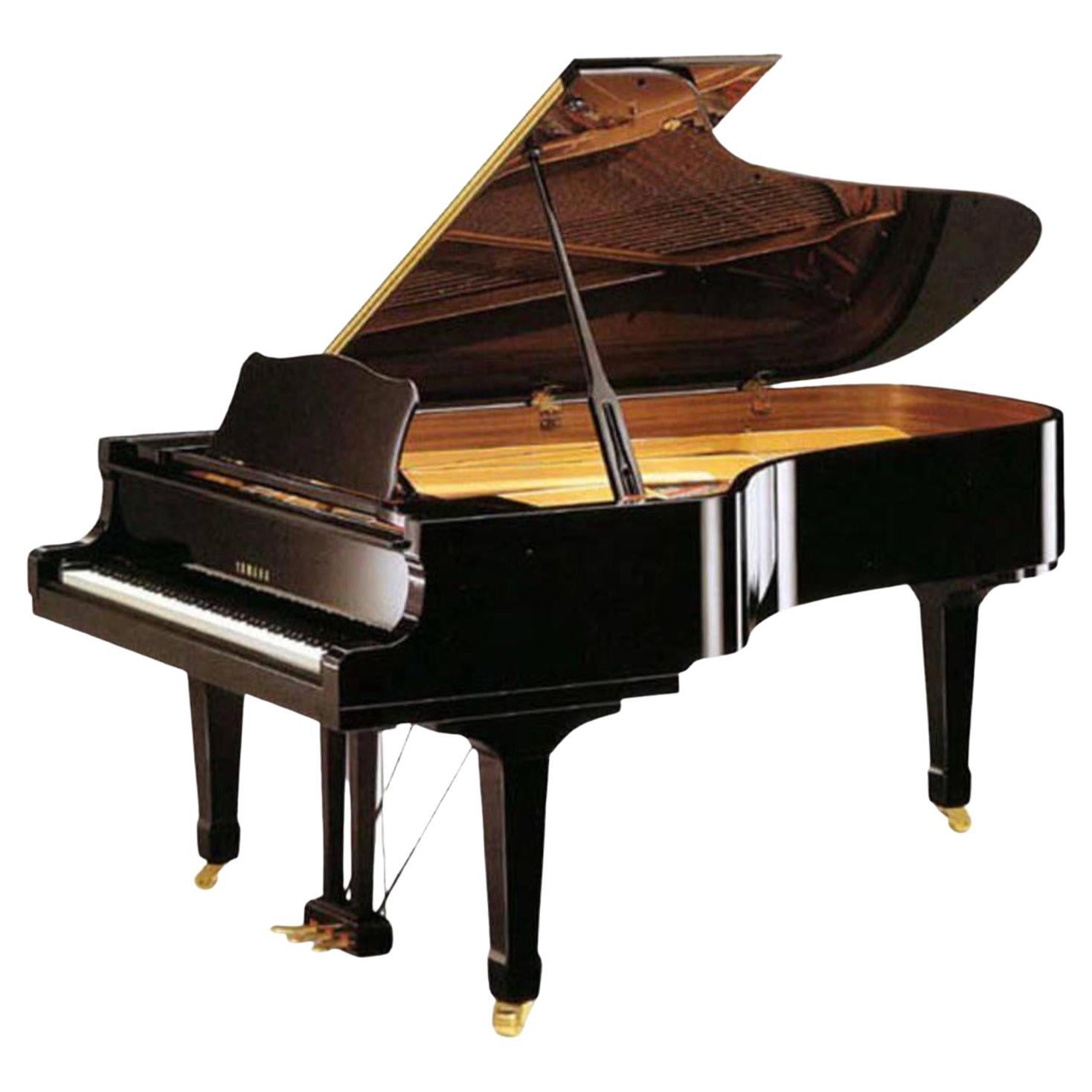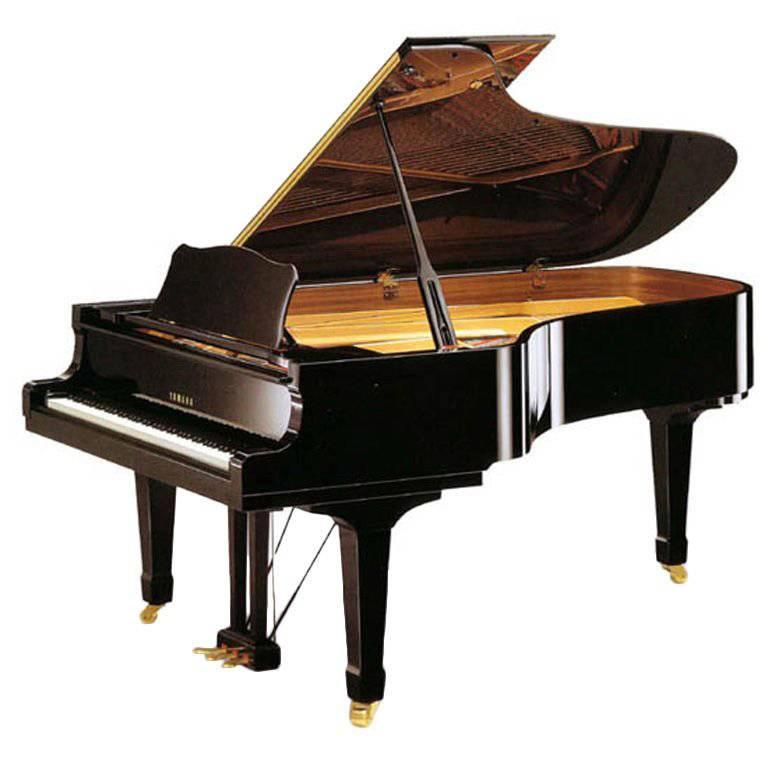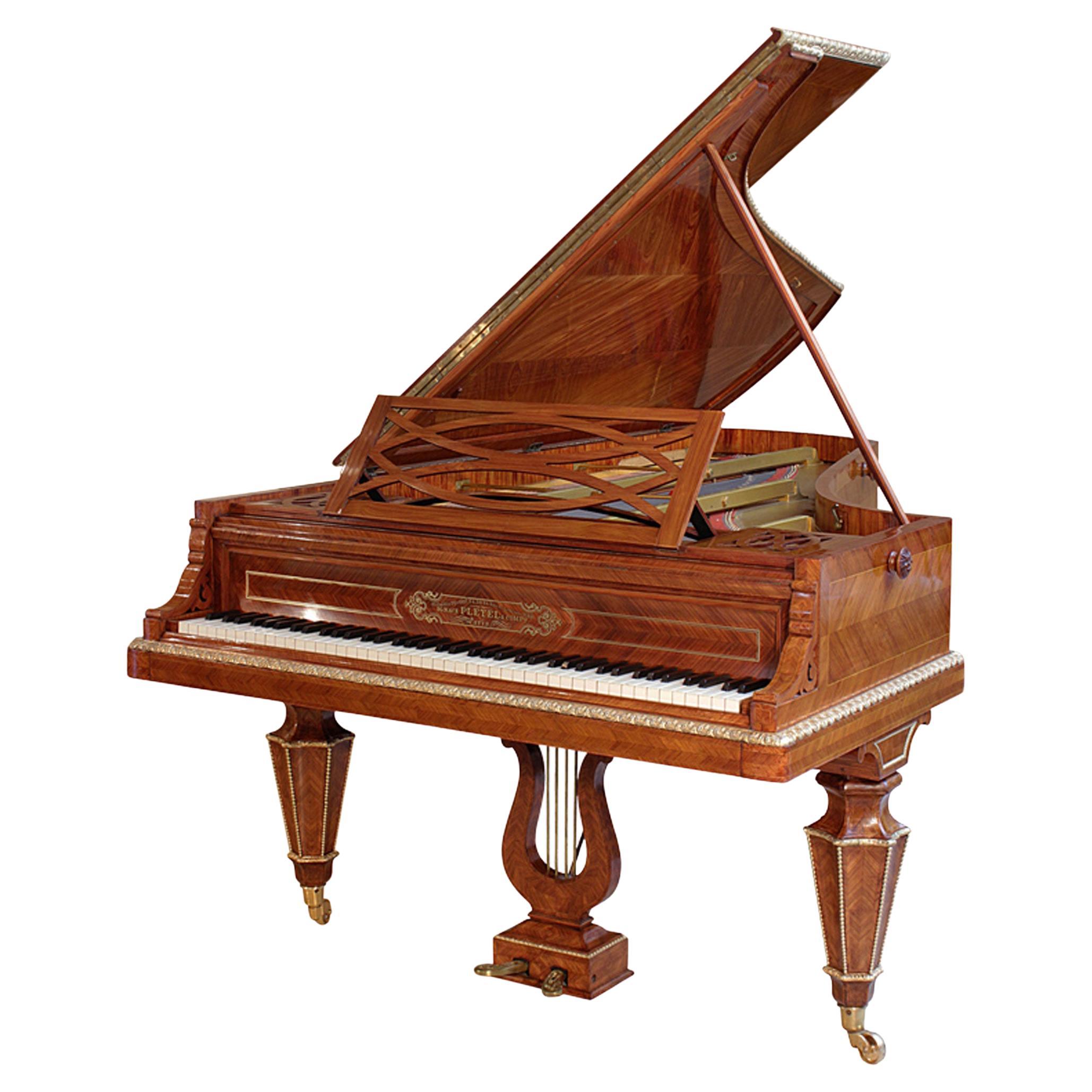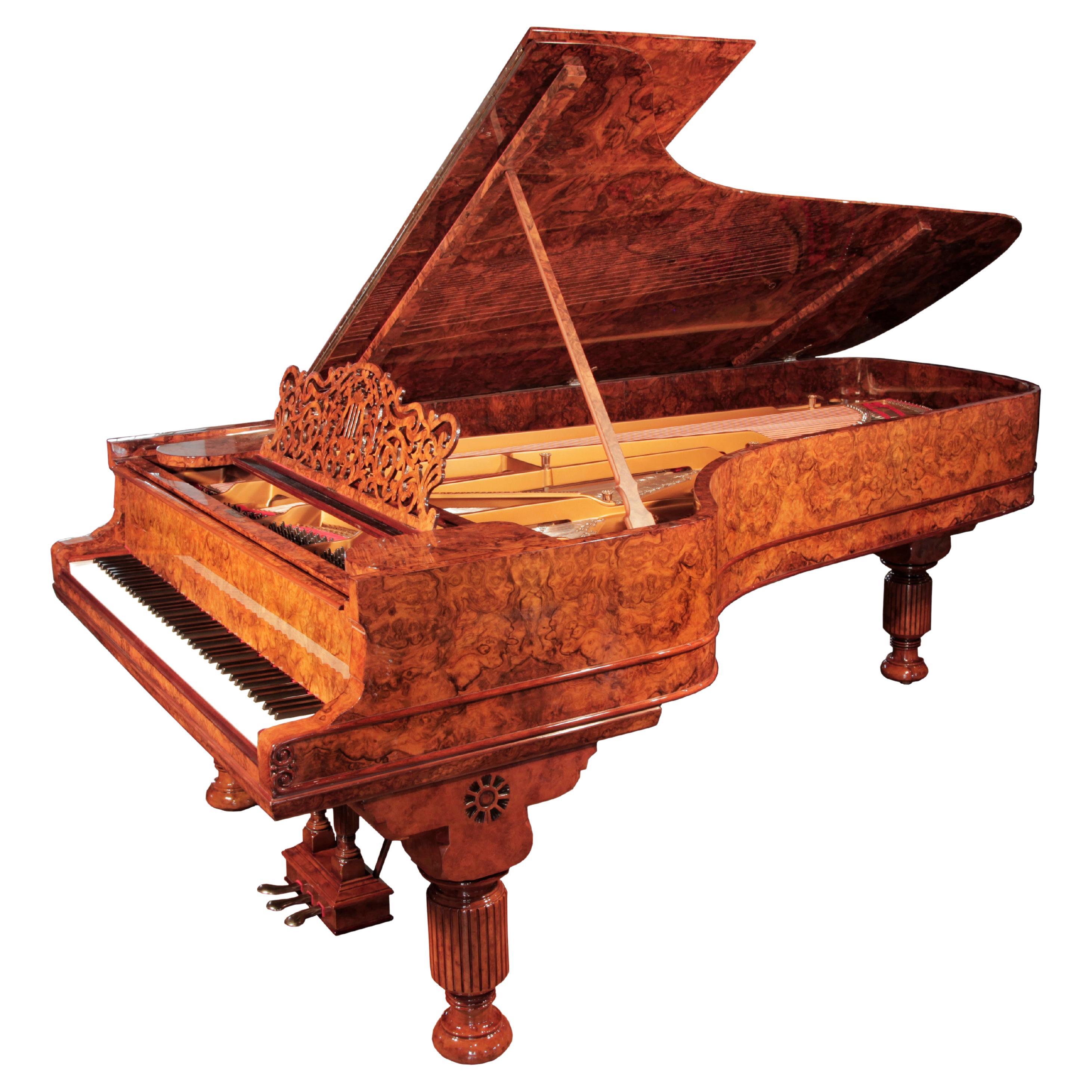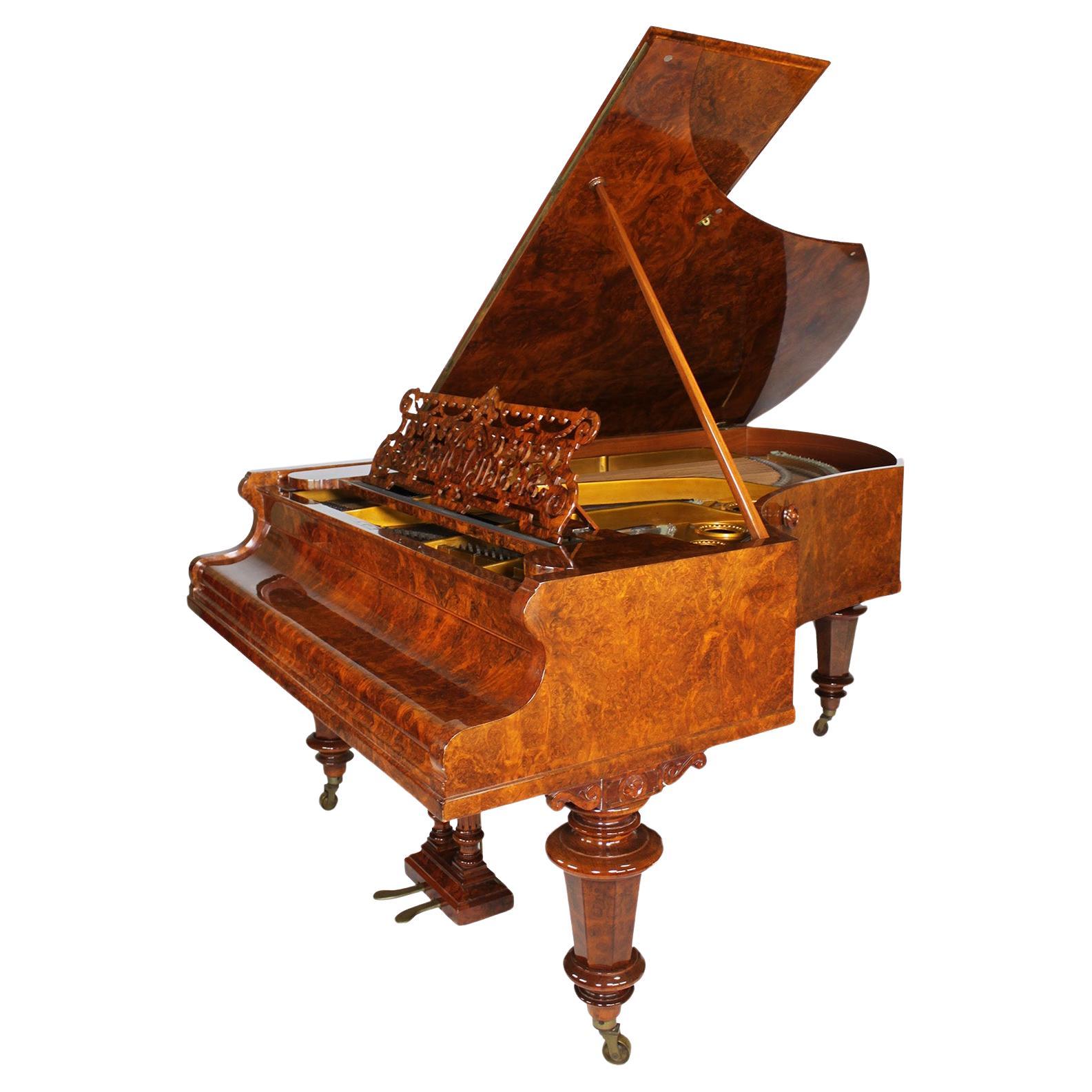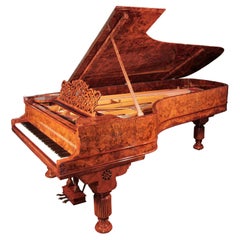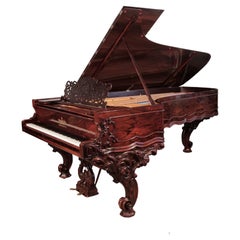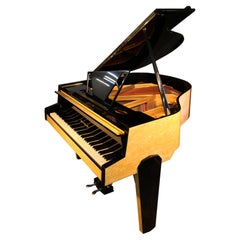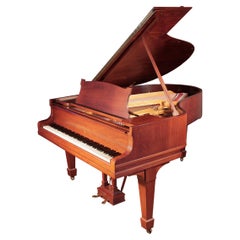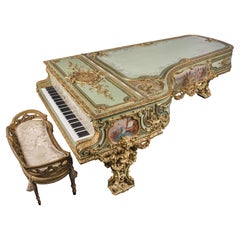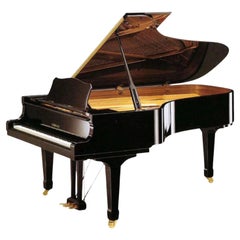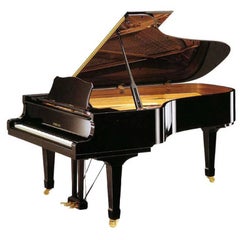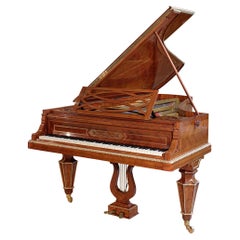Items Similar to Wilh Steinberg WS-D275 Concert Grand Piano Bespoke For York Minster
Want more images or videos?
Request additional images or videos from the seller
1 of 13
Wilh Steinberg WS-D275 Concert Grand Piano Bespoke For York Minster
About the Item
Wilh Steinberg WS-D275 concert grand piano with a black case and brass fittings. Piano has tapered spade piano legs with dual casters for ease of movement that are fitted with brakes. Piano lid prop stick has two indented shorter props to allow the piano lid to be fully open, a third open or near closed. The piano lyre features two square upright supports and three brass pedals. Piano has an eighty-eight note keyboard.
This Wilh Steinberg concert grand was made in 2020 by Parsons Music, the largest piano maker in the world, specifically for York Minster. It was a bespoke order, intended to substitute keyboard music within the Minster for a 2 year period, throughout the once-a-century organ renovation project . Parsons Music took the opportunity to show off their outstanding piano craftsmanship to the half a million Chinese visitors that visit the Minster each year. This concert grand piano is the only one of its type existing in Europe.
- Dimensions:Height: 38.98 in (99 cm)Width: 59.45 in (151 cm)Depth: 108.27 in (275 cm)
- Materials and Techniques:
- Place of Origin:
- Period:
- Date of Manufacture:2020
- Condition:
- Seller Location:Leeds, GB
- Reference Number:Seller: Ref 27481stDibs: LU6879235810712
About the Seller
No Reviews Yet
Vetted Professional Seller
Every seller passes strict standards for authenticity and reliability
Established in 1979
1stDibs seller since 2022
Typical response time: 14 hours
- ShippingRetrieving quote...Shipping from: Leeds, United Kingdom
- Return Policy
Authenticity Guarantee
In the unlikely event there’s an issue with an item’s authenticity, contact us within 1 year for a full refund. DetailsMoney-Back Guarantee
If your item is not as described, is damaged in transit, or does not arrive, contact us within 7 days for a full refund. Details24-Hour Cancellation
You have a 24-hour grace period in which to reconsider your purchase, with no questions asked.Vetted Professional Sellers
Our world-class sellers must adhere to strict standards for service and quality, maintaining the integrity of our listings.Price-Match Guarantee
If you find that a seller listed the same item for a lower price elsewhere, we’ll match it.Trusted Global Delivery
Our best-in-class carrier network provides specialized shipping options worldwide, including custom delivery.More From This Seller
View AllRebuilt 1881 Steinway & Sons Model D Concert Grand Piano Burr Walnut
Located in Leeds, GB
Rebuilt, 1881, Steinway & Sons Model D concert grand piano with a burr walnut case, filigree music desk and fluted, barrel legs. The music desk is an ...
Category
Antique Late 19th Century German Musical Instruments
Materials
Walnut
Rococo Style Steinway Centennial Concert Grand Carved Rosewood
Located in Leeds, GB
Rococo style, 1874, Steinway & Sons Centennial concert grand piano with a rosewood case, filigree music desk and ornately carved, reverse scroll legs. Piano is rebuilt.
The piano cheek features a carved, Classical meander and acanthus in high relief. The two-pedal piano lyre features carved inverted fish, c-scrolls and a central cartouche. The music desk in an openwork arabesque design and a central lyre motif. A sinuous wave pattern double moulding surrounds the cabinet base.
At the 1876 Centennial Exposition in Philadelphia, Pennsylvania, there were several manufacturer's competitions, including a piano competition. The Steinway company sent two grand pianos displaying their latest developments, demonstrating the firm's innovative and markedly improved piano quality. Their determined pursuit of quality was rewarded at the world exhibition with a gold medal. Steinway won the competition against several established, well-known American piano makers, including Chickering and Sons and Weber. This Steinway concert grand...
Category
Antique Late 19th Century German Rococo Musical Instruments
Materials
Rosewood
1950's Style Zimmermann Baby Grand Piano Yellow Formica Tubular Steel Piano Lyre
Located in Leeds, GB
A 1950s style, Zimmermann baby grand piano with a contrasting black and yellow formica case. Piano features an asymmetrical music desk with geometric cut-ou...
Category
Mid-20th Century German Musical Instruments
Materials
Steel
Rebuilt Steinway Model O Grand Piano Polished Walnut Spade Legs
Located in Leeds, GB
Rebuilt, 1925, Steinway Model O grand piano for sale with a polished, walnut case and spade legs. Piano has an eighty-eight note keyboard and a two-p...
Category
Early 20th Century German Musical Instruments
Materials
Brass
Rebuilt Steinway Model O Grand Piano Gloss Black Spade Legs
Located in Leeds, GB
Rebuilt, 1975, Steinway Model O grand piano for sale with a black case and spade legs. Piano has an eighty-eight note keyboard and a two-pedal lyre.
P...
Category
Late 20th Century German Musical Instruments
Materials
Brass
Empire Style Ibach Model 2 Grand Piano Mahogany Case Ormolu Mounts
Located in Leeds, GB
Empire style, 1901, Ibach model 2 grand piano with a mahogany case and gate legs. Entire cabinet decorated with ormolu mounts depicting classical scenes of gods, goddesses and wreaths. This piano is one of 12 unique instruments made as exhibition models...
Category
Early 20th Century German Empire Musical Instruments
Materials
Mahogany
You May Also Like
Steinway & Sons Concert Grand Piano
Located in SAINT-OUEN-SUR-SEINE, FR
This extraordinary concert grand piano with 88 keys was made by the prestigious firm Steinway & Sons around 1894. The case's decoration was entrust...
Category
Antique Late 19th Century French Louis XV Musical Instruments
Materials
Wood, Giltwood
$1,416,183
Impeccable Yamaha C7 Concert Grand Piano
By Yamaha
Located in Los Angeles, CA
Yamaha C7 black lacquer concert grand piano. Yamaha serial number 2442423.
The elite assembly of Yamaha C series grand pianos has always been recognized f...
Category
Vintage 1970s Japanese Musical Instruments
Materials
Iron
On Hold
$32,000
Impeccable Yamaha C7 Concert Grand Piano
By Yamaha
Located in Los Angeles, CA
Yamaha C7 black lacquer concert grand piano. Yamaha serial number 2442423.
The elite assembly of Yamaha C series grand pianos has always been recognized f...
Category
Vintage 1970s Japanese Musical Instruments
Materials
Iron
On Hold
$32,000
French Mid-19th Century Concert Grand Piano Signed Pleyel
By Pleyel
Located in West Palm Beach, FL
A spectacular French mid-19th century, circa 1855, Louis XVI st. tulipwood parquetry and ormolu mounted, Model 2 Concert Grand Piano, signed Pleyel...
Category
Antique 19th Century French Louis XVI Musical Instruments
Materials
Ormolu
A German 19th Century Louis XVI Style Burr Walnut Bechstein Concert Grand Piano
By Bechstein Piano Company
Located in Los Angeles, CA
A Very Fine German 19th Century Louis XVI Style Burr Walnut Bechstein Concert Grand Piano, Serial No. 5655. The beautifully crafted Grand piano, raised on three tapered barrel shaped legs, with an intricately carved ornate music desk and original keys. Circa: 1872.
Length: 80 inches (203.2 cm)
Width: 59 inches: (149.9 cm)
Height (top closed): 38 5/8 inches (98.1 cm)
C. Bechstein Pianofortefabrik
C. Bechstein Pianofortefabrik AG (also known as Bechstein) is a German manufacturer of pianos, established in 1853 by Carl Bechstein.
Before Bechstein
Young Carl Bechstein studied and worked in France and England as a piano craftsman, before he became an independent piano maker. His first pianos were made for other companies.
C. Bechstein
C. Bechstein piano factory was founded on 1 October 1853 by Carl Bechstein in Berlin, Germany.
Carl Bechstein set out to manufacture a piano able to withstand the great demands imposed on the instrument by the virtuosi of the time, such as Franz Liszt. In 1857, Hans von Bülow (Liszt's son-in-law) gave the first public performance on a Bechstein grand piano by performing Liszt's Piano Sonata in B minor in Berlin
By 1870, with endorsements from Franz Liszt and Hans von Bülow, Bechstein pianos had become a staple in many concert halls and private mansions. By that time three piano makers, all of which were founded in 1853, became established as the industry leaders across the world: Bechstein, Blüthner and Steinway & Sons.
In 1881 Bechstein began supplying pianos to Queen Victoria. A gilded art-case piano was delivered to Buckingham Palace, followed by several more Bechstein pianos to Windsor Castle and other royal residences. By January 1886 they were among the piano manufacturers holding a Royal Warrant as a supplier to the Queen. Several British embassies across the world acquired Bechstein pianos.
In 1885, Bechstein opened a branch in London, that eventually grew to become the largest showroom and dealership in Europe. By 1890 showrooms had been opened in Paris, Vienna, and Saint Petersburg. On 31 May 1901, Bechstein Hall, built at a cost of £100,000, was opened next to the company's London showroom at 36-40 Wigmore Street. Between 1901 and 1914, C. Bechstein was the largest piano dealership in London. At that time, Bechstein was patronized by the tsars of Russia, the royal families of Spain, Belgium, the Netherlands, Italy, Sweden, Norway, Austria and Denmark, and other royalty and aristocracy. The list of royal clients of Bechstein may be found on the soundboard of vintage Bechstein pianos made before the Second World War. The list is part of the original Bechstein trademark logo; it can be seen under the strings in the center of a piano's soundboard.
The signature of Carl Bechstein
The years from the 1870s through 1914 brought Bechstein their most dramatic increase in sales. In 1880 a second Bechstein factory was opened in Berlin, and the third factory was opened in 1897 in Berlin-Kreuzberg. Production reached 3,700 pianos annually in 1900, and 4,600 in 1910, making Bechstein the largest German manufacturer of high-end pianos. At that time, about three quarters of production went to international markets, especially Britain and the Commonwealth, and Russia.
Carl Bechstein died in 1900, and the Bechstein company continued to operate under the management of his sons.
Between 1900 and 1914 C. Bechstein was one of the leading piano makers in the world, employing 1,200 craftsmen and workers by 1913 and making five thousand pianos per year.
First World War
C. Bechstein suffered huge property losses in London, Paris, and St. Petersburg during World War I. The largest loss was in London. Although the company's position in the United Kingdom was initially unaffected, with the company still listed as holding a Royal Warrant in January 1915, Warrants to both King George V, and his wife Queen Mary were cancelled on 13 April 1915. Bechstein was not the only musical concern to be affected by growing anti-German sentiment: there were earlier attempts, led by William Boosey, to boycott German music altogether. In 1915, despite being a Baronet and Privy Counsellor, Sir Edgar Speyer, who was then funding the Proms, was forced to leave the country. Following the passing of the Trading with the Enemy Amendment Act 1916 the British arm of the company was wound-up on 5 June 1916, all Bechstein property, including the concert hall and showrooms full of pianos, were seized as "enemy property" and closed. In 1916 the hall was sold as alien property at auction to Debenhams for £56,500. It was renamed Wigmore Hall, and then re-opened under the new name in 1917. All 137 Bechstein pianos at the Bechstein showrooms were confiscated too, and became property of the new owner of the Hall. After a dispute with his brother, Edwin Bechstein left the company and was paid off.
Eventually the Bechstein factory resumed full-scale production during the 1920s. At that time, technical innovations and inventions of new materials and tools, as well as improvements in piano design and construction, had allowed Bechstein to become one of the leading piano makers again.
The most successful models were the updated "A"-185 and "B"-208 grand pianos. The upright pianos became more popular after the war, and C. Bechstein were successful with its upright pianos Model-8 and Model-9, both of which have been considered the finest upright pianos.
As the company was changed into a joint-stock company 1923, Edwin Bechstein and his wife Helene, bought themselves back into the company as shareholders.
In 1930 the company collaborated with German electrical goods manufacturer Siemens under Nobel laureate Walther Nernst to produce one of the first electric pianos...
Category
Antique 19th Century German Louis XVI Musical Instruments
Materials
Bronze
$49,850 Sale Price
33% Off
Poul Hennigsen Grand Piano
By Poul Henningsen
Located in Studio City, CA
Original Poul Hennigsen piano, circa 1930. Has been fully remastered and in beautiful condition. In 1930, the Danish creative genius, Poul Henningsen, reimagined what a piano could be when he created the PH Grand Piano...
Category
Vintage 1930s Danish Musical Instruments
Materials
Leather
$377,000
